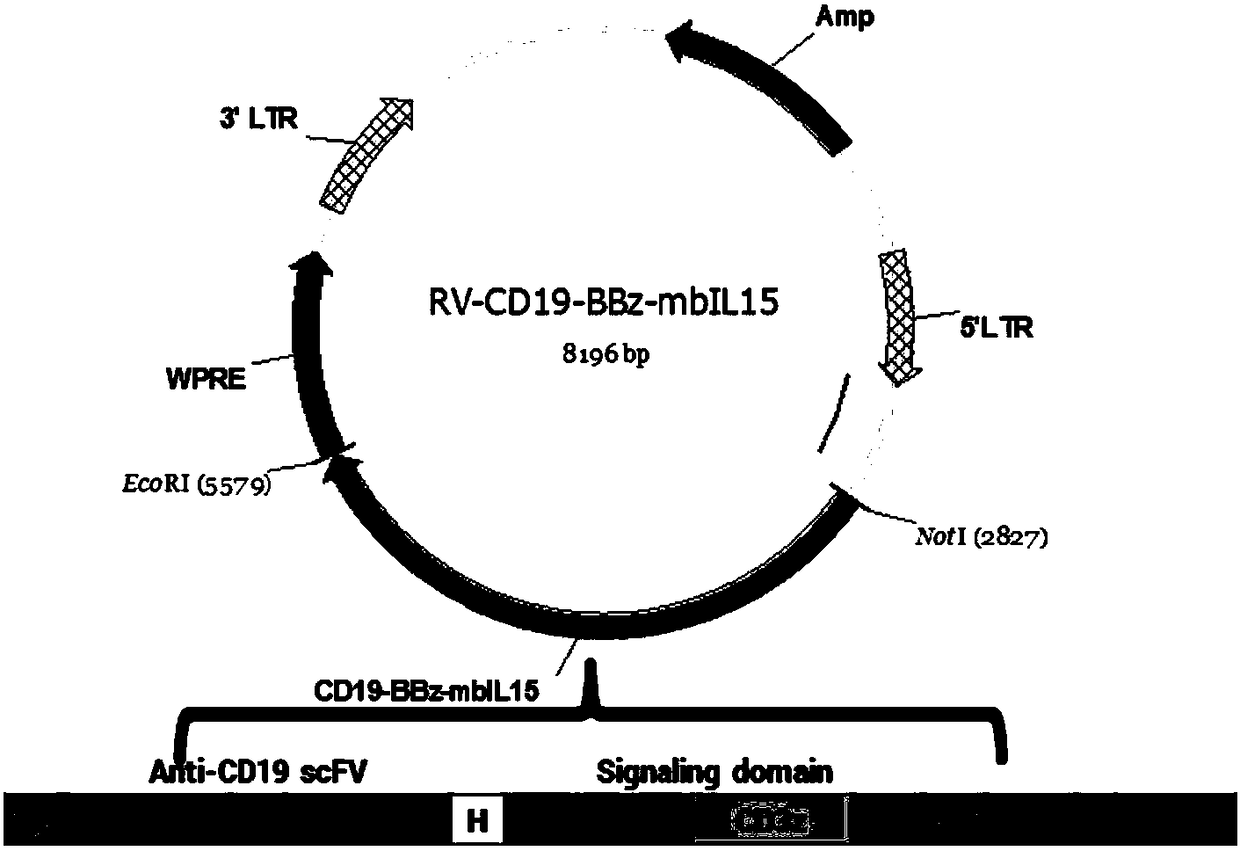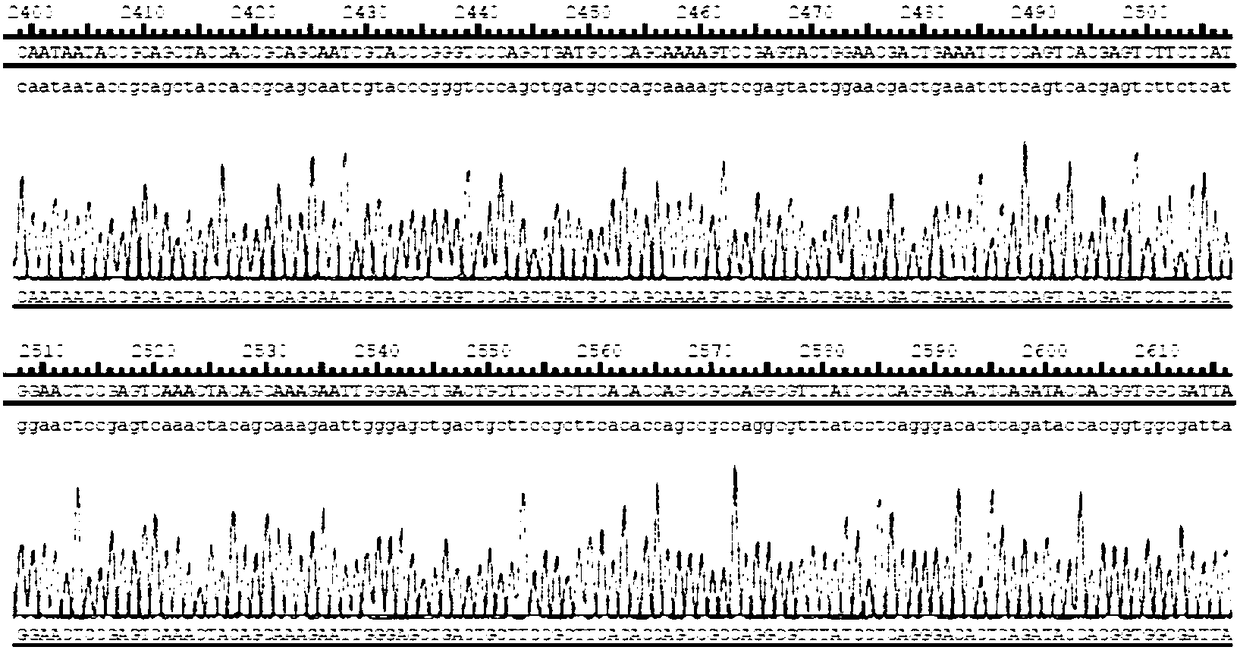Chimeric antigen receptor of targeted CD19 as well as method and use for jointly expressing IL-15
A single-chain antibody, fusion protein technology, applied in the direction of targeting specific cell fusion, polypeptides containing localization/targeting motifs, receptors/cell surface antigens/cell surface determinants, etc., can solve the secretion of cytokines less, less curative effect, poor durability and other problems
- Summary
- Abstract
- Description
- Claims
- Application Information
AI Technical Summary
Problems solved by technology
Method used
Image
Examples
Embodiment 1
[0075] Example 1: Determination of CD19scFv-CD8-41BB-CD3ζ-mbIL15 gene sequence
[0076] 1.1 Search the human CD8α hinge region and transmembrane region, human 41BB intracellular region, human CD3ζ intracellular region, IL15 and IL15Rα mature peptide gene sequence information from the NCBI website database. The anti-CD19 single-chain antibody clone number is FMC63. These sequences Codon optimization is performed on the website http: / / sg.idtdna.com / site to ensure that it is more suitable for expression in human cells without changing the encoded amino acid sequence.
[0077] See SEQENCE LISTING (SEQUENCE ID NO.1-2) for each amino acid and gene sequence information.
[0078] The above sequences were connected sequentially, and different enzyme cutting sites were introduced at the junctions of each sequence to form the complete CD19-BBz-mbIL15 gene sequence information.
[0079] 1.2 Sequencing of recombinant plasmids
[0080] The recombinant plasmid was sent to Shanghai Sangon B...
Embodiment 2
[0083] Embodiment 2: the construction of the viral vector comprising the nucleic acid sequence of CAR molecule
[0084] The nucleotide sequence of the CAR molecule prepared in Example 1 was double-digested by NotI (NEB) and EcoRI (NEB), connected by T4 ligase (NEB) and inserted into the NotI-EcoRI position of the retroviral RV (MSCV) vector point, transformed into competent E.coli (DH5α), after the sequencing was correct, the plasmid was extracted and purified using Qiagen’s plasmid purification kit, and the purified plasmid was transfected into 293T cells by the plasmid calcium phosphate method for retrovirus packaging experiments.
[0085] The plasmid map constructed in this example is as follows figure 1 shown. figure 2 The peak diagram of partial sequencing results of the retroviral expression plasmid is shown.
Embodiment 3
[0086] Example 3: Retroviral Packaging
[0087] 1. On the first day, the 293T cells should be less than 20 passages and not overgrown. Plate with 0.6*10^6 cells / ml, add 10ml of DMEM medium to a 10cm dish, mix the cells well, and culture overnight at 37 degrees;
[0088] 2. On the second day, the confluence of 293T cells reached about 90% for transfection (usually about 14-18 hours after plating); prepare plasmid complexes, the amount of various plasmids is 12.5ug for RV-CD19-BBz-mbIL15, Gag- pol is 10ug, VSVg is 6.25ug, CaCl 2 250ul,H 2 O is 1ml and the total volume is 1.25ml; add HBS equal to the volume of the plasmid complex in another tube, and vortex for 20 seconds while adding the plasmid complex. Gently add the mixture to the 293T dish along the side, incubate at 37 degrees for 4 hours, remove the medium, wash with PBS, and re-add the preheated fresh medium;
[0089] 3. Day 4: 48 hours after transfection, collect the supernatant and filter it with a 0.45um filter, s...
PUM
 Login to View More
Login to View More Abstract
Description
Claims
Application Information
 Login to View More
Login to View More - R&D
- Intellectual Property
- Life Sciences
- Materials
- Tech Scout
- Unparalleled Data Quality
- Higher Quality Content
- 60% Fewer Hallucinations
Browse by: Latest US Patents, China's latest patents, Technical Efficacy Thesaurus, Application Domain, Technology Topic, Popular Technical Reports.
© 2025 PatSnap. All rights reserved.Legal|Privacy policy|Modern Slavery Act Transparency Statement|Sitemap|About US| Contact US: help@patsnap.com



